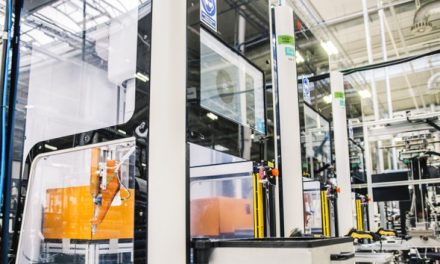Five Tech Predictions for 2019 — The Decade of Disruption

By Duane Benson, Chief Technology Champion at Screaming Circuits

Duane Benson
We’re coming in for a wild ride in 2019. The last few years have been pretty crazy, and 2019 looks to continue that trend, but amped up — 2019 will go to eleven. Don’t worry though. When it is at its worst, just ask yourself what we did the last time the world came to an end.
Despite such anticipation, I’m still quite optimistic. The most long-term successful aspects of our civilization are those that rip apart on a regular basis. Frequent disruption allows for people to start new and create bigger and better things. Without that, the collective “we” ends up focusing too much on holding on to what already exists. Innovation stops and decay and despotism take hold.
The United States isn’t all that different from the rest of the world. We really do have the best, worst, and most-indifferent lifestyle from everywhere else on the planet. I’m reasonably convinced that one of the main things that sets us apart is that we are constantly on the verge of self-destruction. This breaks up entropy and creates a breeding ground for innovation. It makes life very difficult for our competitors that don’t want the best for us.
As soon as they’ve figured out what we’re up to, we’ve given up on that and moved on to something else. It’s an endless cycle of shredding and reinventing, and that reinventing makes progress. So, with that in mind, what do I predict we have to look forward to in the next decade?
1: Artificial intelligence (AI) becomes mainstream.
I doubt many other pundits would disagree with me on this one. However, I see a slightly different perspective than I’ve seen from most others. That is, I don’t see artificial intelligence, or “the machine”, taking us over and enslaving us. I see us creating the machine and then twisting and enslaving it for our own very human purposes.
Back in March, 2016, Microsoft put an AI chatbot out on Twitter. It was to use machine learning to improve its ability to interact with people — to become more human. Within less than 24 hours, it had become a racist, misogynist, jerk. We humans took over that embryonic form of artificial being and twisted it into the worst that we can be.
Humans may still end up being enslaved, but it won’t be by AI. If it happens, it will be by very human humans using very human-controlled systems. I believe that most people are inherently good, but a small number of folks who want to do damage have an inherent advantage over a larger number of those that don’t. Computer systems can amplify that advantage to a terrible degree, and that’s where we need to throw a lot of vigilance.
AI will become mainstream in the next decade. The machine won’t be sentient, but it will largely be indistinguishable from human. We just need to work hard to ensure that it can appropriately deal with the negative human elements or we’ll be surrounded by depressed, disrespectful and angry machines.
2: Highways will become much safer and construction a rare occurrence
At some point toward the end of the next decade highway carpool lanes will start to be converted to auto-car lanes. The only vehicles allowed in will be those that are capable of self driving on freeways and are connected to the Autonet. By the end of the decade, virtually all commercial vehicles will be connected and up to 20 percent of personal vehicles will be as well.
Autonet is a a segment of the Internet dedicated to moving vehicles. It’s designed to allow for collective awareness of everything that may be of concern to a vehicle. Instead of just being aware of its immediate surroundings, with Autonet, all of the sensors and processing capability of networked vehicles is integrated into an awareness data set and made available to anything on the net.
With that Autonet connection, all the vehicles on those lanes will effectively act as one. They will be capable of faster driving speeds while staying much closer together and still being far safer than they are today. Instead of continually widening freeways, this auto-automation will eventually increase existing freeway capacity by a significant amount.
3: The concept of healthcare changes radically
Today, wellness is a thing. It largely consists of encouraging regular checkups, improving diet and increasing activity, all with the aim of reducing costs for insurance carriers. It is a good thing, but far from good enough. Part of the problem with today’s wellness paradigm is that it is built on the model of healthcare technology advancement that we’ve experienced over the past three decades. We are on the verge of a complete shift in the way technology and health interact. It will be as big a change as what happened to daily life with the introduction of the personal computer, Internet, and smartphone.
In five to ten years, we may see the first usable organs for transplant grown out of our own cells. A scaffold will be 3D printed with a dissolvable structure. Skin cells from the recipient are converted to T-cells which are then programmed to grow around the scaffold and become a kidney, liver, or other organ. That organ is then implanted without the need for anti-rejection drugs.
Along with 3D printing, subcellular engineering will come into being. Designer virus capability will become a viable means of curing many cancers and other serious afflictions. Virus programming will eventually allow for fast and effective treatment of almost all known ailments.
Costs for the most advanced treatments are astronomical today and for most of the next decade will continue to climb at an almost logarithmic rate. It will get to the point that insurance companies simply refuse to pay for such treatments and no one with a net worth less than nine figures will be able to afford it. We as a society will have a choice of either letting advancement stall and backslide, or looking at some aspects of health care as we did at the moon shot in the 1960’s; so big that only a government can afford to pay for it.
The first such treatments will cost millions of dollars, maybe tens of millions. But when the T-cells are injected and programmed to rebuild the organ in situ, the costs and level of infrastructure needed drop to a small fraction of what they will be at peak. When the human body is largely rebuildable via injection (probably 20-30 years down the road), healthcare becomes no more serious than auto repair.
4: All of this IoT (Internet of Things) stuff finally works
Today, there are three major personal IoT system leaders (Amazon Alexa, Google assistant, and the Apple Siri HomePod i-IoT thing) and a vast number of small contenders. You can do a lot, but it’s still a tech-enthusiasts game. None of the systems are really easy enough for the average person to set up, secure, and configure. Interoperability is still questionable at best. Within the next decade standards, protocols and security technology will reach the point such that adding to your IoT life will be no more difficult than plugging in a toaster.
Going that last mile to make things easier is often more difficult than all of the time spent prior combined, but it’s the most important. We won’t be able to fully take advantage of all that the Internet has to offer until it is that easy. I’m seeing that in another five to ten years.
5: We get security figured out
Security, like ease of use, is a prerequisite to fully engaging on the potential of a connected world. Today, with all of the distance we’ve come, social engineering – a human contacting a human — is still the biggest class of security vulnerability. We will always need improvements in technology security, but it will never be enough without solving the human social problem. I wish I knew what the solution will be. That would be a great business to go into. But it’s way beyond me. Someone will figure this out within the next decade and when they do, a lot of unrealized potential is suddenly opened up.
In fact, my four predictions above all depend on this happening.













